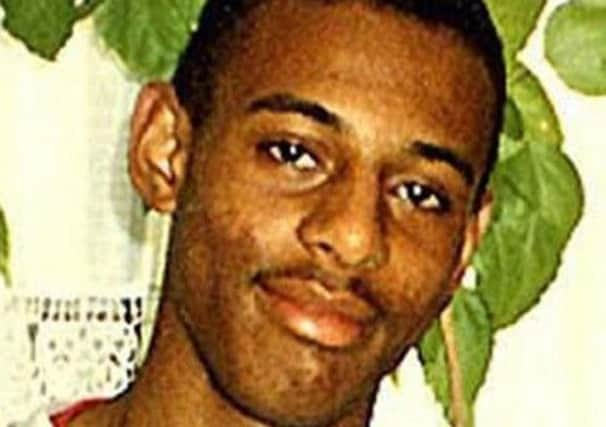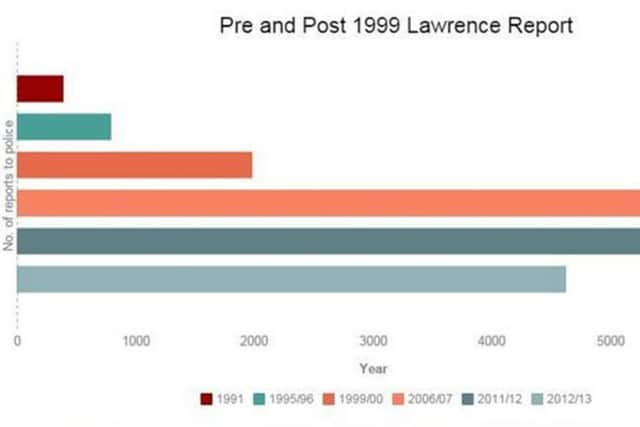Racism in Scotland since the Stephen Lawrence Report


The report into the murder of Stephen Lawrence infamously labelled London’s police force “institutionally racist”.
The findings helped to shift public attitudes toward race and exposed the the unjust treatment facing black and minority ethnic (BME) at the hands of the police force.
Advertisement
Hide AdAdvertisement
Hide AdSince the release of the Lawrence Report in 1999 the reporting of racist incidents in Scotland has more than doubled. The steep rise in numbers from 1,986 reports in 1999/00 to 4,628 in 2012/13, could suggest a rise in public confidence towards reporting.


However, findings from a 2011 report by the organisation Coalition for Racial Equality and Rights (CRER) and a UK wide report by the Home Office suggests that there is in fact a lack of racist incident reporting.
The number of incidents which go unreported is impossible to establish. Though what does seem clear is that most unreported incidents often take the form of verbal insults or threats and what has been termed ‘low-level harassment’ by officials.
What is suggested by the Scottish Government in their commissioned Victimisation and Racist Incident Report is that since the change in policy, which came about as a response to the 1999 Lawrence Report, officers then began recognising racist incidents as separate occurrences and recorded them as such, accounting for the rise of 2,514 between 1999 and 2004.
Where the guidelines regarding what constitutes a racist incident seem much clearer there seems to be a consistent debate over the data released and the conclusions drawn.
CRER are sceptical of the numbers provided by officials stating ‘that whenever there is an increase in reporting, the establishment states that this is due to an increase in confidence, but whenever there is a decrease in reporting, the establishment states that this is due to a decrease in racism rather than decrease in confidence’.
Despite the incongruity local racial equality and rights organisations and the police actually share similar numbers of racial incident referrals with each respectively receiving 45 per cent and 48 per cent referrals of incidents according the governments most recent questionnaire data.